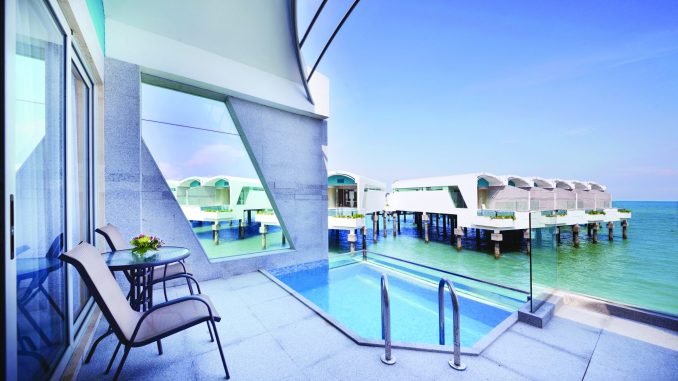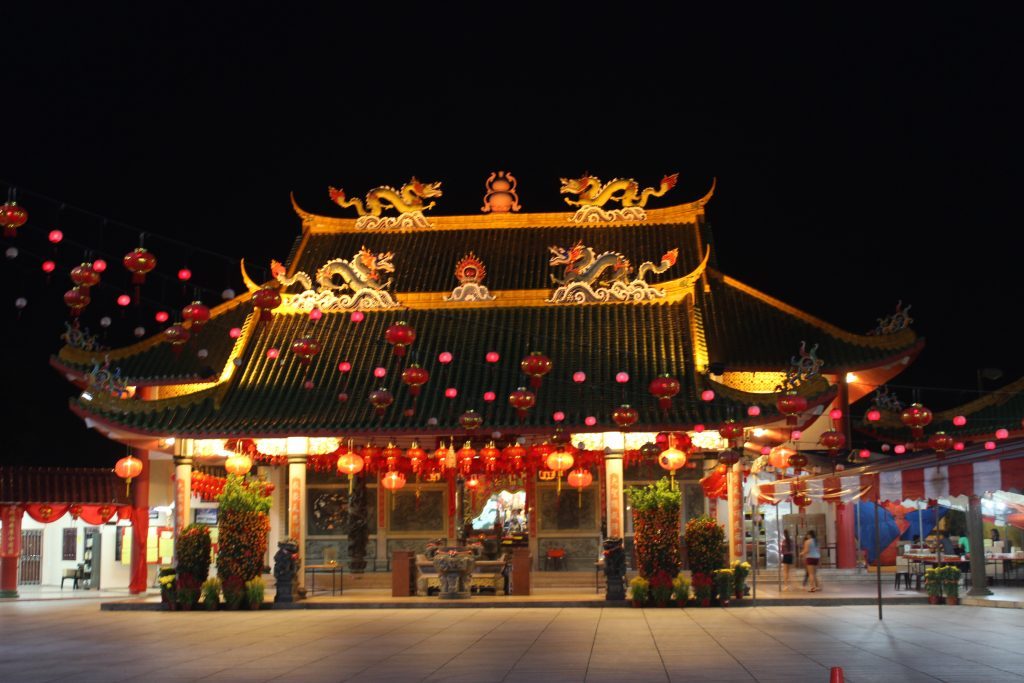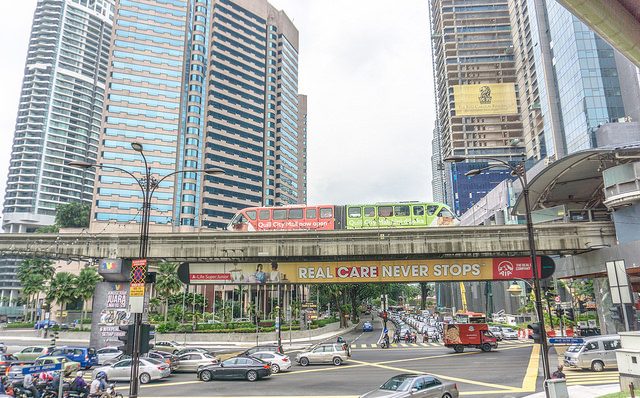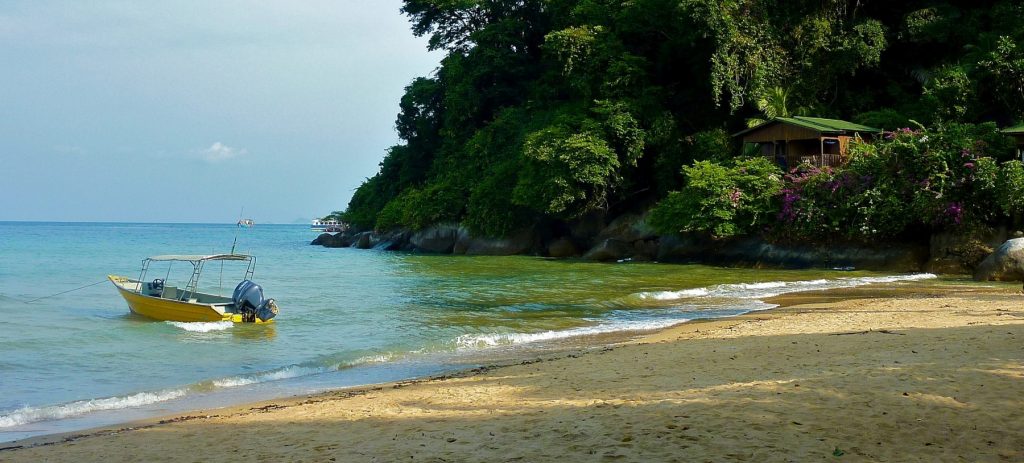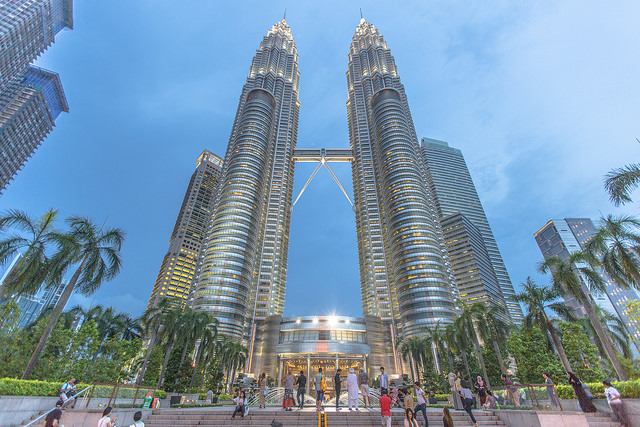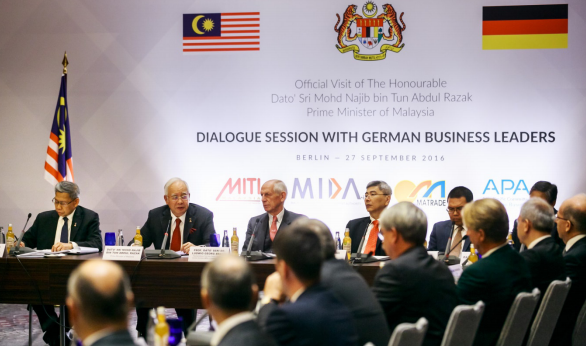Malaysia
Room with a Pool
| by Uwe Fischer |
A resort that has each accommodation equipped with its own swimming pool: thanks to this concept, the Malaysian Lexis Group is successfully mixing up the hotel landscape of the Southeast Asian country.
Port Dickson is a coastal town on the Strait of Malacca in the Malaysian state of Negeri Sembilan. Its relative proximity to the capital Kuala Lumpur makes it a popular weekend destination for locals and visitors from neighbouring countries, as can also be seen from the large number of hotels, including seven in the 4 and 5-star categories. However, it is hard to say that Port Dickson is particularly attractive, as it hardly has any sightseeing icons or specialities that would attract a large number of long-distance travellers.
But for some years now, this slowly has been changing, thanks to two 5-star resorts by Lexis in Port Dickson. They attract international guests with a distinctive feature: every accommodation in both of these hotels comes with its own swimming pool.
Grand Lexis Port Dickson

Let’s start with the Grand Lexis: It was opened in 2009 and has 317 villas designed in Balinese style. Some of the rooms are in the main hotel building, but most of the accommodations are water villas that have been built on stilts in the ocean, as you can see here in our photo album.
The rooms are characterised by Mediterranean colours, warm wood tones and tasteful interior design with a great deal of attention to detail, such as the bedside tables illuminated from the inside, or the window in the floor. Beside the spacious bedroom with two king-size beds, there is a kitchenette and a bathroom. The small pool, which is accessible from all 3 rooms, is, of course, the absolute highlight and enables the highest possible privacy due to its privacy screen. This extraordinary concept was even ennobled with an entry in the Malaysian Guinness Book of Records, where it was listed as the hotel with the most swimming pools.
Lexis Hibiscus

In the meantime, however, it has had to give this award back to Lexis Hibiscus, which opened in 2015 and boasts over 600 pools, setting not only the national but also the world record. Here the planners have gone one step further and have given the villa landscape the shape of a hibiscus. For the marketing department, of course, this is a dream, as it puts them in the ranks of iconic hotels – the Palm Island in Dubai sends its regards. The hibiscus shape was chosen because the flower is one of Malaysia’s national symbols.
The rooms and the pools are slightly smaller than the Grand Lexis, but architecturally more modern, with light colours, glass and marble predominating (photo album). The television, which is framed laterally by dark glass surfaces, contributes substantially to the optics of the room. The icing on the cake of every villa is the steam bath on the terrace – another feature you won’t find anywhere else.
Grand or Hibiscus?

Both houses are therefore primarily aimed at guests for whom a hotel is more than just an overnight accommodation and offer the highest quality, professional management, a wide range of leisure activities for young and old and of course, as is generally the case in houses of this category in Malaysia, excellent restaurants in which one does not have to dig too deep into one’s pocket.
The two Lexis hotels in Port Dickson are 20 minutes away by car. While the Grand Dickson is closer to the centre, the Hibiscus is a little out of town. In terms of price, both hotels are in the upper price range compared to their competitors, with the hibiscus being the more expensive. Understandably, because it offers more activities, more restaurants and a somewhat more exclusive ambience. But the Grand Lexis also has its advantages. The rooms of the Grand are larger and have a warmer ambience. And the community pool is more inviting and located in a quieter environment than the hibiscus pool, where many guests stroll past on their way to the beach.
Which brings us to the beach: yes, both hotels have a beach and thus offer an opportunity to swim in the sea. However, the water quality is rather average; those who travel to Malaysia because of its picture-book beaches, which are rightly praised, are definitely in the wrong place in Port Dickson.
…and the winner is? Lexis!

The two Lexis‘ in Port Dickson are separated a 20 minutes drive from each other. While the Grand Dickson is closer to the city, the Hibiscus is a little bit outside. Compared to other hotels in the area, both hotels range in the upper price class with the Hibiscus being the more expensive one. Which is understandable, as it offers more facilities, more activities, more restaurants, and a certain exclusiveness. But the Grand Lexis has its advantages, too. For example, the communal swimming pool looks more inviting and is located in a quieter area compared to the Hibiscus pool which is next to a walking path. The Grand’s rooms are bigger and come with a warmer ambience.
So which one is the better choice? The Lexis Hibiscus or the Grand Lexis? In my opinion, this is only a question of personal taste. If you want to stay in a modern hotel that is even listed in the Guinness Book of Records, choose the Hibiscus. If you have a predilection for Balinese comfort, book the Grand. Or, if you want to stay more than one night in Port Dickson, best you can do is to visit them both.
Chinese New Year 2018 in Malaysia
Am 16. Februar 2018 ist es wieder soweit – das chinesische Neujahr wird zelebriert. In diesem Jahr stellen die Feierlichkeiten, die den Beginn des Jahres nach dem chinesischen Bauernkalender markieren, eine Besonderheit dar, denn es ist das Jahr des Hundes – ein besonders positives Sternzeichen für ein Jahr nach dem chinesischen Glauben. Malaysia ist bereit für das Spektakel.
Denn als „Meltingpot“ der Religionen, werden in Malaysia die Feste gefeiert – egal welcher Religion man angehört. So hat das chinesische Neujahrsfest einen wichtigen Part in den nationalen Feierlichkeiten des Landes. Die Straßen und Viertel schmücken sich heraus und an den rund 15-tägigen Festivitäten sollte es nicht schwer sein, eine Einladung zu einer Feier zu erhalten. Denn die Tradition des „Open House“ ist auch bei anderen malaysischen Festanlässen ein wichtiger Bestandteil.
Das chinesische Neujahr liegt in jedem Jahr zwischen dem 20. Januar und dem 21. Februar und wird mit Beginn des neuen Mondes des ersten Monats im neuen Jahr eingeläutet. Es ist das wichtigste Fest der Malaysier chinesischer Abstammung. Ganz Malaysia feiert, am ausgiebigsten jedoch sind die Feierlichkeiten auf der chinesisch geprägten Insel Penang. Häuser und Tempel werden mit roten Laternen und Neujahrsgrüßen geschmückt, die Familie kommt zu üppigen Festessen zusammen und Kinder, Alleinstehende und ältere Angehörige dürfen sich über ‚Ang Pows“, Geldgeschenke in roten Umschlägen, freuen.
Der erste Feiertag beginnt morgens mit traditionellen Zeremonien bei einem Tempelbesuch und einer Spende für die Armen. Auf Hokkien, dem in Malaysia am weitest verbreiteten chinesischen Dialekt, wird sich freudig mit „Keong hee huat chye“ beglückwünscht. Anschließend wird im Kreise der Familie traditionsgemäß als erstes Gericht „Yee Sang“, ein Salat bestehend aus rohem Fisch serviert, der von allen am Tisch Anwesenden mit ihren jeweiligen Stäbchen vermischt wird – je höher dabei der Salatwurf, umso mehr Glück wird das Jahr bringen, so heißt es. Ab dem zweiten Tag der Feierlichkeiten sind Türen und Tore offen – auch für Touristen und Fremde.
Und weil das Jahr 2018 das Jahr des Hundes ist und mit den positiven Eigenschaften von Ehrlichkeit, Gewissenhaftigkeit, Loyalität und Respekt vor Traditionen assoziiert wird, ist die Vorfreude auf das Neujahrsfest in diesem Jahr besonders groß. Denn das Jahr 2018 steht unter einem guten Stern, viel Glück zu bescheren.
Beendet werden die Festivitäten am 15. Tag mit einem großen Laternenfest auf den Straßen, das von Feuerwerk, sowie Drachen- und Löwentänzen begleitet wird. Zum Abschluss der Feiertage wird dabei auch noch einmal im Kreise der Familie mit reichlich Speisen aufgetischt und das Beisammensein genossen.
Über die Website von Tourism Malaysia gibt es weitere Informationen rund um Malaysia.
Diese Pressemitteilung wurde auf openPR veröffentlicht.
Hasselkus PR
Königsteiner Str. 55A
65812 Bad Soden
www.hasselkus-pr.com
Tel. +49 (0)6196 56140-0
E-Mail:
Travelling In Malaysia
by Uwe Fischer //
In Malaysia, you can travel relatively safely and easily on your own. The transport infrastructure is on a high level, transportation fares are low and there is no need to learn the Malay language, because English is widely spoken. Actually, you only need a few things to be prepared for travelling: A smartphone, including some relevant apps, Malaysian SIM card and, not to be forgotten: a pullover!
The pullover is essential because in the sun-drenched country, where outside temperatures of over 30 degrees Celsius are the norm, it seems to be a widespread disease to regulate all interiors, especially of buses, trains and taxis down to refrigerator temperatures. At times, this made me feel so uncomfortable that I had to leave buses more than once before reaching my target just to escape the ice-cold, merciless blower on my sweaty skin.
Changing Money
 First thing you arrive in Malaysia, you should exchange money, if you haven’t already done so. This is usually accomplished at the private money changers‘ premises that can be found at airports and railway stations, as well as in shopping malls and shopping streets. Those counters, little booths or shops usually display the current courses on illuminated signs – so you don’t have to worry about being bamboozled as a foreigner. There are also no fees, so it is absolutely transparent, WYSIWYG so to speak: What You See Is What You Get.
First thing you arrive in Malaysia, you should exchange money, if you haven’t already done so. This is usually accomplished at the private money changers‘ premises that can be found at airports and railway stations, as well as in shopping malls and shopping streets. Those counters, little booths or shops usually display the current courses on illuminated signs – so you don’t have to worry about being bamboozled as a foreigner. There are also no fees, so it is absolutely transparent, WYSIWYG so to speak: What You See Is What You Get.
On top of that, the prices are also cheaper than those in the banks (in which you also need a lot of patience, but that’s another story). Currently you get between 4.50 and 4.90 Ringgit for one Euro, with the exchange rates among the Money Changers usually differing only a few cents.
Alternatively, you can, of course, also draw cash by EC or credit card at the ATM. Please note that fees may be charged by both the Malaysian and the domestic institute.
Internet & Phone
The second thing you should get is a Malaysian SIM card to have a local phone number (makes it easier to communicate with drivers) and, more importantly, an Internet flat rate. These can best be purchased directly in a shop or sales counter at the airport or train station. Ask the seller to directly activate it for you on site for immediate use. Flat rates are usually advertised for starting at 40 Ringgit, providing a data volume of 1 GB or more in a given time frame.
Then you should install the following apps:
1. Grab and/or Uber
Grab is the Malaysian competitor of Uber, and it is used by the locals more often than Uber, according to my observation. Usually Grab offers its rides a bit cheaper… which explains why Grab competes Uber so successfully, because Malaysians are smart savers! Incidentally, Grab in Malaysia seems to have become THE national part-time job offerer. Nearly all the Grab drivers I’ve talked to do the job just casually in their spare time.
Once you have installed and activated the app, simply enter the pick-up and destination address, the price will be displayed shortly afterwards and the request will be confirmed. Then wait a few seconds or minutes for a driver to be found. They will be informed automatically and will contact you by phone or via messenger shortly before arriving. The app itself also provides information on where your driver is at any time.
2. A hotel booking app
I personally used booking. com exclusively because I am used to the app and never faced any problems. But of course this should also apply to the competitors as well. Those who prefer private accommodation should also check out airbnb or use the official „Homestay“ program of the Malaysian tourism authorities. (However, their offer is quite manageable, see: http://www.malaysia.travel/en/resources/tourism-directory/homestay)
With these, you are perfectly equipped to move around as an individual traveller without stress, at least in the conurbations. Maybe a navigation software wouldn’t hurt either, but I personally didn’t use any; if at all, I consulted maps to estimate distances.
Bus tours

In the metropolises, especially in Kuala Lumpur and George Town, there are well developed bus networks, in those two cities there are even free bus lines connecting the main attractions (Go KL resp. MBPP Rapid Penang CAT). The regular lines are also not expensive. If you want to explore the city by bus, you should check out the Hopon HopOff lines in KL and Penang. Although they are quite expensive with 40 resp. 50 Ringgit, they are a comfortable offer and the tickets are valid for a whole day.
If you want to travel longer distances, you should either rent a car (international driver’s license is necessary!) – there are usually several providers at the airports, and if you take the time to compare fares, you can save a few bucks here – or consider long-distance buses or trains. It is not advisable (and not always feasible) to buy tickets online beforehand. Instead, I recommend the classic way of getting through to the train station/bus terminal, buying tickets on site and waiting for the next bus. However, it makes sense to google in advance when and how often the buses actually go.
Tickets should only be purchased at the official counters to avoid being cheated – it sometimes happens on the way to the counter that tourists are being approached by „helpful“ people who want to sell them tickets. Ignore them! Instead, cue in front of the counter, even if it takes a little longer. Better than waiting afterwards for a bus that has just left or departs only hours later!
The quality of the buses is mostly fine, but of course you don’t have a guarantee. On the popular routes between the metropolises, different providers operate at different prices, perhaps it makes sense not to save at the wrong end and to choose a higher-priced provider.
Further links:
http://www.penang-traveltips.com/cat.htm
http://www.malaysia.travel/en/resources/tourism-directory/homestay
Marvellous Islands of Malaysias
Beautiful sandy beaches, a unique marine life and diverse nature are the hallmarks of Malaysia’s islands. From Pulau Tioman to Pulau Pangkor to Gaya Island, the country’s versatility is also reflected in Malaysia’s islands, which offer tropical rainforest and a fascinating underwater world to explore. Depending on the island, the recommended travel times vary so that the country can be visited at any time of the year.
Pulau Tioman
Tioman is one of Malaysia’s most beautiful and most travelled islands. It is about 38 km long and 19 km wide and represents the largest island in a group of 64 volcanic islands off the coast of Pahang. In addition to its natural landscape, Tioman is also known for its fascinating underwater world. Whether diving on coral benches or snorkeling on Salang Beach in the coral gardens between sea fans and sea anemones – diving and snorkeling enthusiasts can enjoy the rich marine life of Tiomans. The large selection of 5-star hotels on the island ensures a luxurious holiday experience, but there are also numerous accommodations for the smaller budget. The best time to visit Tioman is from March to October.
How to get there: Take a bus or drive to Mersing on the Eastern coast of the Malaysian peninsular. Find the jetty harbour and take two-hour ride to the island.
Pulau Pangkor
It has a reason that the name of the island can be derived from the Thai word „Pang Ko“ – beautiful island. On its beautiful beaches, the island of Pangkor offers various activities – from diving, snorkelling and windsurfing to fishing – water lovers will be delighted. The island is a fascinating holiday destination with its extraordinary mix of resorts and fishing villages. Tourists interested in culture explore the lively fishing villages and gain an insight into the life of the locals. Snorkel lovers will find shallow, crystal clear water and still undamaged coral reefs at the beach area Pasir Bogak. The Teluk Nipah offers a wider, less populated beach section with emerald green water and is known as a coral beach. Located on the beach of Pantai Puteri Dewi, the Pangkor Island Beach Resort has a top location and offers stylishly furnished rooms, sports facilities and a golf course. Here you can also observe the protected hornbills and other wild animals. To go sightseeing on the island of Pangkor, travelers can rent vehicles from van to motorcycle. The months of January to April and August to November are best suited for a trip on Pangkor.
How to get there: Take a bus or drive to Ipoh and from there to the town of Lumut where you can take a 30-minute ferry ride over.
Gaya Island
Off the coast of Kota Kinabalu, capital of Sabah province, lies the island of Gaya, which belongs to the protected Tunku Abdul Rahman Marine Park and has been a forest reserve since 1923. In addition to its fine snorkeling possibilities, Gaya Island is also ideal for nature lovers. In order to preserve the unique natural and animal world, the Gaya Island Resort and its Marine Center are committed to the rescue of turtles and the protection of coral reefs as well as to raising awareness of nature conservation. At the Wildlife Center, travellers can marvel at the wealth of flora and fauna, as well as some of the most fascinating and exotic species in the world. The months between March and October are ideal for a trip on Gaya Island.
City Survey credits Kuala Lumpur one Top Spot in Asia
A new study that was intoduced today (to be published in October) rates Kuala Lumpur one of the top cities in Asia.
Source:
http://www.thestar.com.my/news/nation/2017/01/23/kl-ranked-among-top-cities-survey-all-things-considered-it-is-second-only-to-spore-in-se-asia/
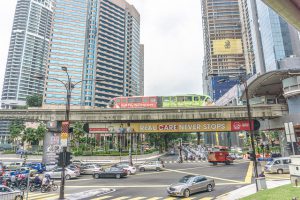
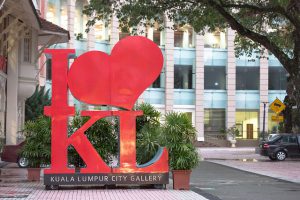
Malaysia at a Glance
| FACTS & FIGURES | Source: CIA Worldbook |
|---|---|
| It’s About Time | |
| Area: | 329,847 km2 |
| Calling codCorcovado (Quiet Nights)e: | +60 |
| Capital and largest city: | Kuala Lumpur (1,588,750 citizens) |
| Currency: | Ringgit |
| Ethnic groups: | 50.4% Malay, 23.7% Chinese, 11.0% Indigenous, 7.1% Indian, 7.8% other |
| King: | |
| Official languages: | Malaysian Malay (Bahasa Malaysia) |
| Official script: | Malay (Latin) alphabet |
| Population: | 31,381,992 (July 2017 est.) |
| Prime Minister: | Najib Tun Razak |
| Recognised languages: | English |
| Seat of Government: | Putrajaya |
| System of Government: | Federal parliamentary, constitutional monarchy, Elective monarchy |
| Time zone: | MST (UTC+8) |
Malaysia remains supportive of Free Trage Agreements
Malaysia will turn its focus on bilateral free trade agreements (FTAs) with TPP members, should the Trans-Pacific Partnership Agreement (TPPA) fall through, Read more:

